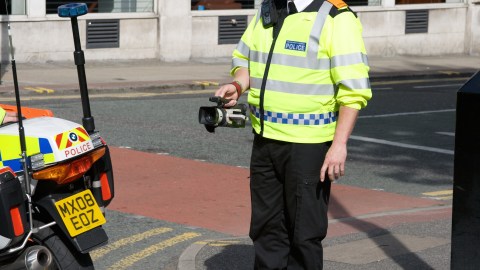Outfitting Cops with Cameras Forces People to Behave

The recent deaths of Michael Brown, Eric Garner, and Antonio Martin have sparked a national debate over police responsibility and safety. It’s a frustrating problem that people believe can be fixed with body cameras, and a recent study proves that this surveillance solution shows promise.
Max Ufberg from the Pacific Standard writes on the study that was published in the Journal of Quantitative Criminology. Researchers equipped Rialto cops at random with pocket-sized cameras to wear while on-duty for 12 months. The results showed that officers used less force to apprehend a culprit, dropping 59 percent compared to last year. What’s more, individuals using force against police officers dropped by 87 percent.
One of the co-authors of the study, Dr. Barak Ariel, explained the reason behind the results, and it all involves the psychology of how we act when we know we’re under a microscope:
“With institutionalized body-worn-camera use, an officer is obliged to issue a warning from the start that an encounter is being filmed. [This will impact] the psyche of all involved by conveying a straightforward, pragmatic message: We are all being watched, videotaped, and expected to follow the rules.”
It’s an unfortunate solution to an upsetting problem–that we must resort to turning into a surveillance state in order to force people to do the right thing. To control inmate populations English philosopher and social theorist Jeremy Bentham designed a structure called the “panopticon,” in which a watchman could see into every prisoner’s cell. However, the observer couldn’t watch all cells at a single time, leaving inmates to behave as if they were being observed at all times. It’s basic psychology: When we know we’re being watched, people tend to fall in-line.
The only thing stopping every police district from carrying these cameras is cost. Ufberg reports that at almost $400 per camera, poorer counties (where they are needed more) may have trouble finding the funds to outfit their forces.
Read more at Pacific Standard
Photo Credit: Pete Birkinshaw/Flickr




